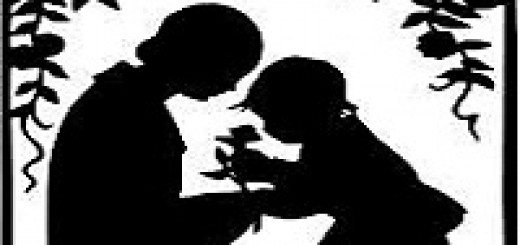By Rabbi David Sterne
As the Torah was given on Mt. Sinai, “the mountain was totally smoke,” according to the Torah. The word for “smoke” – ashan (eyn-shin-nun)– is an acrostic for olam (“world”), shana (“year”) and nefesh (“soul”). The sages tell us that these are the three elements of creation – space, time, and soul (“soul” is the internal vitalizing force of creation). So, the implication is that not only the creation, but also the Torah was given in the three dimensions of space, time and soul.
Nevertheless, when it came time to make the menorah that was commanded in great detail in the Torah, Moshe had trouble. He couldn’t figure out what form the Menorah was supposed to take, until God “showed” him a vision of the Menorah as it was supposed to look. Based upon this vision, Moshe was able to make the Menorah. However, the commentaries wondered why Moshe had trouble visualizing the Menorah. The man who memorized the entire written and oral Torah and presented it to the Jews should not have had difficulty remembering the details of the Menorah as well…
R’ Shapira suggests a reason for that. He suggests that the detail that was eluding Moshe was the number of “cups” that were built into the branches of the Menorah. Moshe wanted to know the “secret” of these cups, and God revealed to him that there were twenty-two cups, corresponding to the twenty-two letters of the Hebrew alphabet. What is the importance of twenty-two? The Megaleh Amukot refers to the Sefer Yetzira (“Book of Formation”), which explains that among the twenty two letters, there are three “source letters” (aleph, mem, shin), seven “double letters” (beit, gimmel, dalet, cof, peh, resh, tov), and twelve “simple” letters. He then goes on to explain that this configuration of three, seven and twelve permeates the entire creation. Because it is built into the letters, which are the building blocks of creation, the creation itself is patterned after this template of three, seven and twelve.
R’ Shapira then proceeds to demonstrate this tripart template in the three dimensions of olam- shana-nefesh (“space-time-soul”). In the dimension of olam (“space”), we find the three elements of air, fire and water. We also find the seven planets, and the twelve constellations of the stars above. In the dimension of time, R’ Shapira does not specify, but we might surmise that it refers to the three festivals (Pesach, Shavuot and Succot), the Shabbat (which goes according to the seven days of the week) and Rosh Chodesh (the head of the months, of which there are twelve). And in the dimension of “soul,” we find the three main “governors” of the body – the head, the heart and the liver. And we find the seven orifices (eyes, ears, nostrils and mouth) and the twelve limbs (right and left arms, legs and kidneys, the reproductive organs, the large and small intestines, the liver, the stomach and the spleen). This pattern of three-seven-twelve is imprinted on all of creation because ultimately there are twenty-two channels of influx from the Creator to His creation, and they divide into the three groups of three, seven and twelve. They are alluded to in the verse, becha yevarech Yisrael, (“through you the Jews are blessed”) wherein the initial word becha means “through you,” and carries the gematria of twenty-two.
At the inauguration of the tabernacle Aharon’s role as the High Priest came into relief. To Aharon fell the task of lighting the Menorah, and with this action, he was able to inspire and encourage all of the Jews to serve God with love, fear, and excitement. Since the seven candelabra of the Menorah represented the seven “emotional” sephirot in the world of Atzilut, his action brought down divine influx to all of the Jews in the form of the seven “emotions” from Above which descended to inspire the Jews in the lower world below.
And this was the reason for the twenty-two “cups” that were present on the candelabra – they were receptacles for the twenty-two conduits of divine influence that descended from above. The same is true of the twenty-two lines on which a mezuzah are written; each line represents one of the twenty-two channels of divine influence that descend to the world. And for that reason, there were twenty-two thousand Levites in the original counting. And also, the shechina does not dwell among less than twenty-two thousand Jews. All of these are different ways of expressing the power of the twenty-two letters of the Hebrew alphabet, which conduct divine influence down to creation from Above.
Although R’ Shapira does not say so, Moshe Rabeinu must have represented the concept of “three,” or the intellectual attributes of chochma, bina and da’at. These attributes are beyond creation, but the seven lower “emotional” attributes are the tools of creation. And therefore, when Aharon lit the Menorah, he aroused the divine influence from the seven “emotional” sephirot Above to come down through the seven candelabra and into the twenty-two cups of the Menorah, down to us in this physical world. That was the secret of the Menorah, given to us on Mt. Sinai, but even Moshe Rabeinu himself had difficulty grasping the secret until revealed to him from Above by God.
Rabbi David Sterne is a prolific author on chassidic thought and has translated many of its seminal works. He resides in Israel and is the director of Jerusalem Connection. To read more of his work and to purchase his books visit http://www.jewishspiritualbook






















